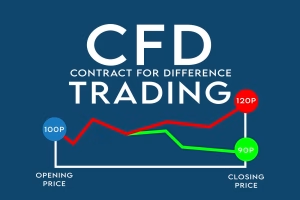Understanding the Dow Jones Industrial Average
The Dow Jones Industrial Average (DJIA) stands as one of the oldest and most commonly referenced stock market indices in the world. It represents a selection of 30 significant publicly traded companies in the United States and serves as a barometer for the overall health of the U.S. economy. In this article, we will delve into the history, significance, components, and how to trade the Dow Jones Industrial Average effectively.
History of the Dow Jones Industrial Average
The DJIA was established in 1896 by Charles Dow, the co-founder of Dow Jones & Company. Initially, it consisted of just 12 companies and was designed to give a quick snapshot of the market’s performance. Over time, the index expanded to 30 companies, maintaining its relevance as a key indicator of U.S. economic activity.
The DJIA has undergone several revisions since its inception, adding various influential companies that reflect the changing dynamics of the economy. The introduction of technology, healthcare, and financial companies illustrates the index’s evolution in capturing the pulse of the economy.

Structure of the DJIA
The Dow Jones Industrial Average is a price-weighted index. This means that companies with higher stock prices have a more significant influence on the index’s movements than those with lower stock prices. While this calculation method can provide insights into how large-cap companies are performing, it can present some limitations. For instance, a single stock with a high price can disproportionately impact the index, regardless of the overall market performance.
Current Components of the DJIA
As of October 2023, the DJIA includes 30 major corporations that represent diverse sectors of the economy. Some notable companies within the DJIA include:
- Apple Inc. (AAPL)
- Microsoft Corporation (MSFT)
- Goldman Sachs Group, Inc. (GS)
- UnitedHealth Group Incorporated (UNH)
- The Coca-Cola Company (KO)
For a complete list of the current components of the DJIA, visit the official Dow Jones Indexes website.
Importance of the DJIA
The DJIA serves several key functions within the financial market:
- Economic Indicator: The DJIA’s performance is closely watched by economists, investors, and policymakers. A rising index often signals economic growth, while a declining index may indicate economic trouble.
- Market Sentiment: Investors often gauge market sentiment through DJIA movements. Rapid gains generally signify optimism, while sharp declines may reflect fear or uncertainty in the market.
- Benchmark for Performance: Many fund managers use the DJIA as a benchmark to assess their performance. If a fund consistently beats the DJIA, it may be considered a better investment.
How to Invest in the DJIA
Investing in the DJIA can take several forms. Here are the most common ways:
1. Exchange-Traded Funds (ETFs)
There are several ETFs that track the DJIA, offering investors an efficient way to gain exposure to the index without directly purchasing individual stocks. One popular option is the SPDR Dow Jones Industrial Average ETF Trust (DIA). Investing in an ETF allows for easy trading and typically comes with lower fees compared to mutual funds.
2. Mutual Funds
Some mutual funds are also designed to replicate the performance of the DJIA. These funds typically follow a more passive investment strategy and can be a suitable option for investors seeking diversified exposure.
3. Futures Contracts
For more advanced investors, trading DJIA futures offers the opportunity to speculate on the future direction of the index. This method allows traders to capitalize on both rising and falling markets, albeit with a higher level of risk.
Strategies for Trading the Dow Jones Industrial Average
When trading the DJIA, incorporating effective strategies is crucial. Here are a few strategies that can help guide your trading:
1. Technical Analysis
Utilizing charts and indicators to analyze price movements can provide valuable insights into potential future performance. Popular indicators include:
- Moving Averages: Identify trend reversals and support/resistance levels.
- Relative Strength Index (RSI): Gauge overbought or oversold conditions.
- Bollinger Bands: Measure market volatility and potential breakout points.
2. Fundamental Analysis
Understanding the economic and financial environments affecting the DJIA is essential. Keeping an eye on company earnings reports, economic indicators (like GDP growth, unemployment rates, and inflation), and geopolitical events can help you make informed decisions.
3. Diversification
While the DJIA consists of 30 stocks, it’s still a good practice to diversify your portfolio beyond this index. Investing in varying sectors and regions can help reduce risk and improve overall returns.
Staying Informed
Remaining knowledgeable about the market is critical. Resources like Yahoo Finance or CNBC provide daily updates on market performance, economic forecasts, and expert analyses.
Relevant Outgoing Links
- Investopedia – Understanding the Dow Jones Industrial Average
- Wall Street Journal – Market Data
- S&P Dow Jones Indices – DJIA Historical Data
Internal Links
- Learn About Stock Market Basics – Trading Market Signals
- Trading Strategies Using Market Indexes – Trading Market Signals
- Join Our Expert Trading Community – Trading Market Signals
Challenges and Considerations
While the DJIA presents considerable investment opportunities, it also has its challenges. The price-weighting system can sometimes distort market perceptions, and significant company announcements or market events can drastically impact the index. Traders should remain vigilant and be prepared for volatility.
Conclusion
The Dow Jones Industrial Average is an invaluable resource for investors looking to gauge the health of the U.S. economy. Understanding its history, structure, and the different ways to trade it can empower you to make informed decisions in your investment journey. With the right strategies and continued education, you can leverage the insights offered by the DJIA to enhance your trading proficiency. For more information on stock market trading and investment strategies, visit Trading Market Signals, your trusted resource for market insights.








